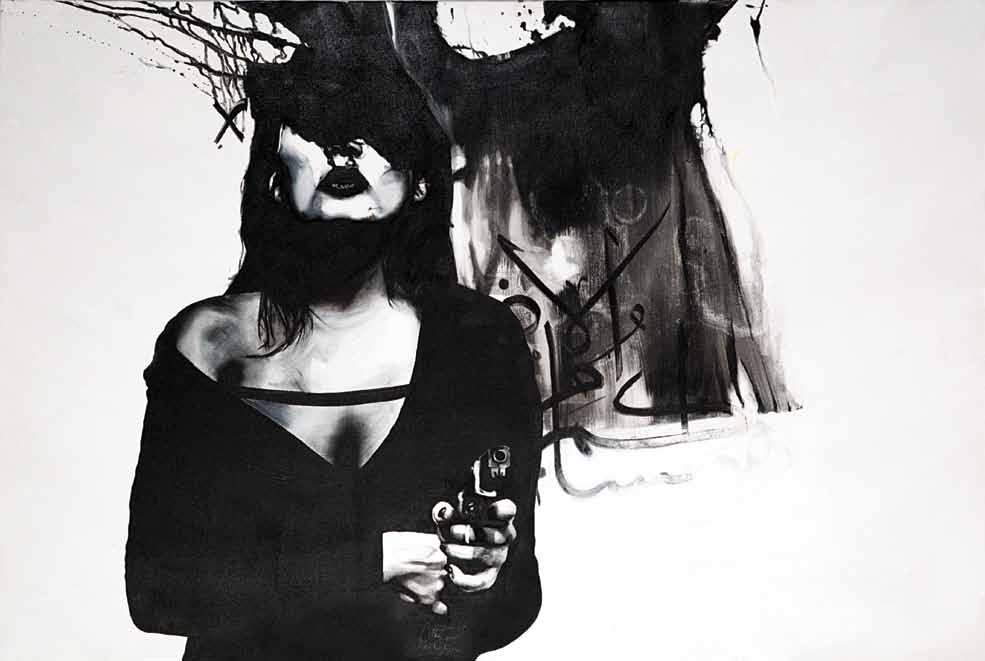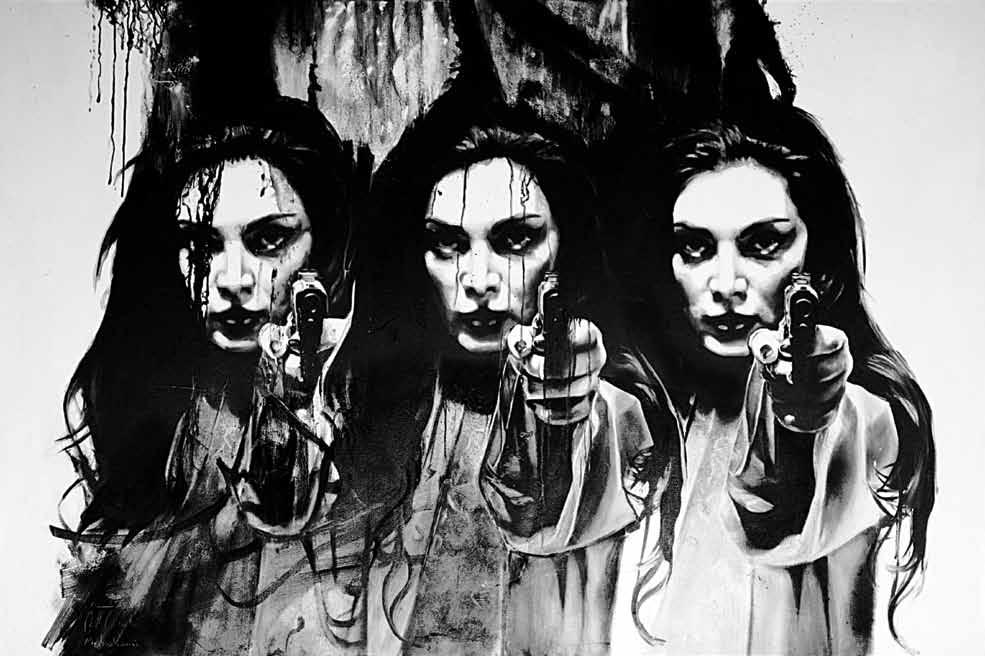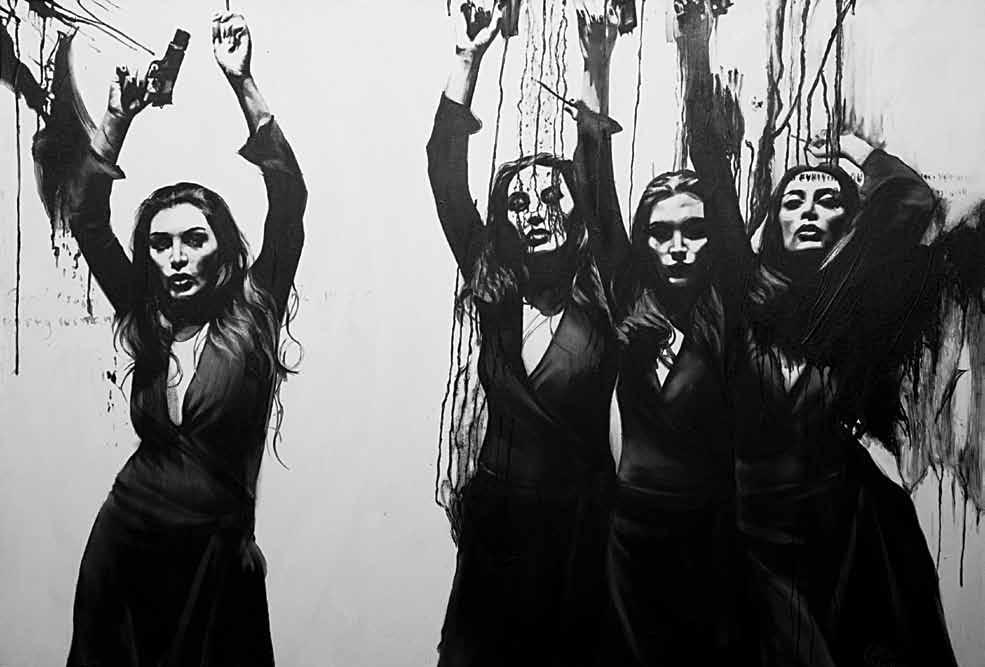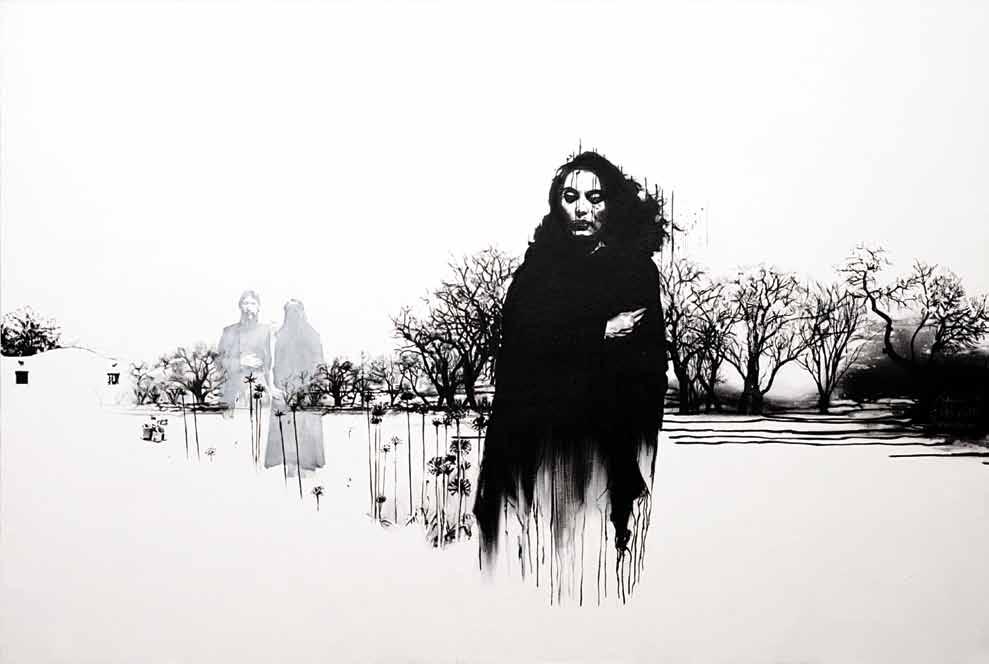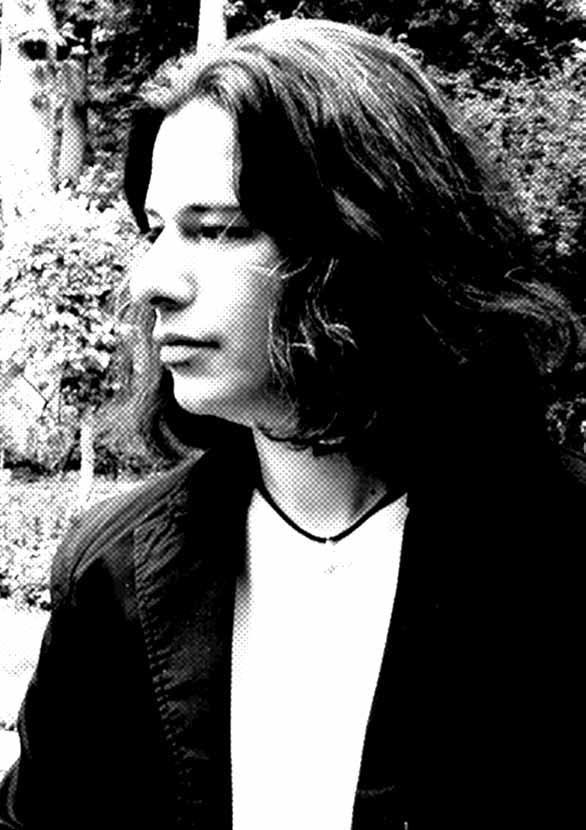AFSHIN PIRHASHEMI


THE WRONG WOMEN
AFSHIN PIRHASHEMI
Ayyam Gallery Dubai (DIFC)
11 March - 25 April 2013
The work of Iranian painter Afshin Pirhashemi examines the complexities of life in modern day Iran. On sparse or empty backgrounds, his largely monochromatic, photo-realistic depictions of women nod to gothic fantasy in an exploration of issues of contemporary social and political identity.
Born in 1974 in Urmia, Afshin Pirhashemi now lives and works in Tehran. His works are housed in public and private collections throughout the Middle East and Europe and he is the recipient of awards from the 2003 Tehran 6th International Art Biennial, and the 2004 Beijing Art Biennial Award. Solo exhibitions include Homa art Gallery, Tehran (2009); Seyhoun Art Gallery, Tehran (2005); and Barg Gallery, Tehran (2005). Group exhibitions include In & Out, Milan (2009); Tehran Museum of Contemporary Art, Tehran (2006); Museum of Contemporary Art, Tehran (2004, 2003).

Afshin Pirhashemi is a young Iranian artist who made international headlines with several recent sales of his paintings on auction. Though pedigreed through Biennales in Tehran and Beijing, his relatively unknown works shot to over half a million dollars in only three years. His prodigious talent, psychologically compelling subject matter, and newly exclusive representation by the internationallyexpanding Ayyam Gallery who is holding a solo exhibition of his works in London in October, will undoubtedly secure this young Iranian's place as one of the top contemporary painters from the country.
Born in Urmia in 1974, Afshin Pirhashemi's preternatural ability was displayed in his first exhibition at the age of sixteen. He received a grant from the Italian Ambassador to study at the Rome Art Academy and completed his Bachelor of Arts at Azad University in 2007. Even prior to achieving his degree, his painting was recognized with Second Prize at the 2005 China Biennale, ranking his work with artists such as Gerard Richter. Renowned for photo-realistic portraiture and subject matter that cleverly approaches the complexities of presentday culture and politics in Iran through the varied portrayal of women, Pirhashemi has since exhibited alongside indisputable masters of Iranian art, Abbas Kiarostami and Parviz Tanavoli, and was listed in the top 500 global artists in the company of acclaimed artists Reza Derakshani, Shirin Neshat and Farhad Moshiri.
In his new aptly titled series, 'The Wrong Women' , Pirhashemi delves into extreme personalities and succinctly portrays the darkness that can lie just behind a beautiful face. Once again, his canvases are colored - if monochromatically - with the contradictions of contemporary Tehran and the hidden facets of women.

A subtle layer of autobiography is hidden amidst the 'The Wrong Women', revealing insight into the personal life of this enigmatic artist. Readily understandable as a narrative, this new series powerfully demonstrates the cyclical pattern of pleasure and destruction. Through these paintings, the artist explores the motivations and behaviors capable of severing relationships and the recent dissolution of his marriage.
A Personal Reflection
Though much of his oeuvre aims to highlight the duality of contemporary Iranian culture, he occasionally allows a glimpse beyond this world by interjecting a personal reflection of his marital life. Always incorporating the same elements, namely a dwelling representing their communal home, a dog symbolizing fidelity and loyalty, and an image of his wife or modeled representation thereof, Pirhashemi allows his audience momentary access to the most personal of relationships.
In 2006, Pirhashemi painted his wife in monochrome, holding a cigarette in one hand and curbing a Doberman Pinscher with the other. Heeling proudly at her side, the dog is protective and obediant while the woman is portrayed in a position of control. If one is to personify the Doberman as the artist, then this time could be looked upon as a stage of marital bliss. Portraying himself as a Doberman Pinscher, the artist projects the traits of this noble breed into his own character. He stands beside his wife as a strong, loyal, fearless and intelligent man.
After fifteen years of marriage, Afshin and his wife separated in 2012. Lonely, the most recent personal reflection, was created to divulge the societal perceptions of his divorce. Of the work the artist has stated, "Lonely is very important to me and it took me a long time to finish. My wife and I separated around eight months ago, and this painting is a reflection of society's perspective towards the lonely me and the lonely her" .
This triptych is comprised of a left panel depicting an entrance to the property, a central panel with a female figure, and a right panel with a solitary canine. In the left panel, the gate opens inward and the foliage surrounding the wall, as well as the dandelions in the foreground, suggest Spring.
Oil on Canvas 100 x 300 cm
The inclusion of dandelions is telling as they symbolize a wish, hope, faithfulness and a happy union. In Farsi, the word for dandelion, ghasedak, translates to 'the little messenger'. To blow upon the white puff of the seeding flower would scatter the pistils in the air, transporting the thoughts to the distant loved one. Not to doubt the paralleled interpretations of Afshin, dandelions also have come to symbolize grief and letting go.
In the central panel, a woman stands with her hands clasped in front of her stomach. Representative of Pirhashemi's ex-wife, she looks outward at the viewer with a stern and somber expression. This, coupled with the tension in her tightly clasped hands apparent by the engorgement of her veins, suggests unapproachability. She is enveloped in a cloak with indistinguishable script that appears weighted on her shoulders, as if the past is bearing down upon her; yet her hair flows with the wind, alluding to her new freedom and lack of restraint.

Notably, her hair freely blows toward the right panel where a lone Doberman Pinscher is seen galloping from a sparsely wooded area in the distance. Although uncertain as to the nature of this action, whether the animal is aggressively lunging or frantically searching, it is clear that without a master and without a home, this dog is left to the wilderness.
The small stature of the dog in relation to the central woman, and the stark, winter environment contrasted with the welcoming entrance and seeding dandelions of the left panel suggest a great separation of space, whether physical or temporal.

 Lonely (Detail)
2012
Oil on Canvas 100 x 300 cm
Lonely (Detail)
2012
Oil on Canvas 100 x 300 cm
Lonely (Detail)
2012
Oil on Canvas 100 x 300 cm
Lonely (Detail)
2012
Oil on Canvas 100 x 300 cm
Pirhashemi has used this composition in happier times as evinced by an earlier triptych forming part of Waterhouse & Dodd's 2009 exhibition of Contemporary Middle Eastern Art in London, 'Routes II', which is compositionally similar to Lonely, though its mood differs vastly. Where the central woman in Lonely appears burdened, the woman portrayed in the 2008 painting is carefree; her hair lapping on the breeze, the scripted shawl lightly veiled over her long hair, her easy smile softening the hard monochrome palette. The left panel depicts a closed door to a home, not merely an entrance to the property grounds and perhaps most relevant, a pair of dogs run together in the right panel. A sense of security and comfort in companionship pervades this composition that is in direct opposition with his new work, which is overwhelmingly solemn and forlorn.
A Tripartite Representation
With a nod to Freudian metapsychology, Pirhashemi's tripartite representation of the women in The First Timer and Untitled prominently portrays the three parts of a psyche; that which is revealed to the external world, that which is kept to oneself, and that which is not readily apparent and is the unmasked dark side of a personality.
A young woman hides her face in the cowl of her sweater in three different poses in The First Timer. Fraught with emotion, sensations of innocence, anger and determination are captured on her face and her hands display a progression of increased tension.
The First Timer is as suggestive a work as its title implies. Overtly sensual references such as a large V-shaped viscous matter with dripping trails and a fibrous central hole, a small male to the right of the canvas urinating, as well as an ithyphallic larger male half covered in the dark matter further elucidate this intimate theme. Yet like his models, his paintings also possess more than a single layer of interpretation.
The hands of the figure in the center of the composition differentiates her from the other two figures whose arm wraps protectively around the waist while the other raises the cowl neck. Clasped within the palm of her closed hands is the grip of a handgun. Her eye focus shifts from the viewer to

 Untitled
2012
Oil on Canvas
100 x 150 cm
Untitled
2012
Oil on Canvas
100 x 150 cm
the sight of the gun, the barrel of which has been censored to leave a myriad of interpretations. Yet the splattering of blood and sense of violence and aggression is discernible in either reading of the work.
Ever faithful to presenting the social complexities of his homeland, Pirhashemi paints his cleavagebearing, chador-clad ladies sipping glasses of whiskey in Untitled. A sign at the top of the canvas discloses the cause of the protagonist's angst. Even though she is responsible for the eviction of her male partner, she is still portrayed in three divergent emotional states, which correspond to Freud's theory of the id, the ego and the super-ego.
The central figure is shrouded in the shadow of her dark, inner personality. Head titled slightly upwards, she inhales her cigarette in defiant denial of her pain. She retains a great strength, stubbornly assured in her convictions and the dismissal of her lover, glaring out of the corner of her eyes, willful revenge plagues her every thought. This harshness of attitude is offset by the delicate earring scintillating in the light; a juxtaposition to reflect her once soft femininity and further enforce that great beauty is capable of inflicting great misery. This basic instinctual desire for revenge represents the id.
The figure on the left is bathed in light. Staring directly at the viewer, she sits exposed with her loneliness and pain on view for all to see, even if she wills it to disappear. In an almost rationalizing manner, she holds a lit cigarette between her fingers and raises the glass to her lips. Clear-eyed and aware,
this figure constitutes the super-ego, that part of the psyche which plays a critical and moralizing role. With a wider negative space separating her from the central figure, lighter coloring and deliberately cropped face, Pirhashemi positions this figure and her mood at variance with the other two.
The figure to the right is slightly darker. The grief and sadness of the situation has set in, yet her anger and thirst for revenge has not been quenched. As the ego, she strives to appease the id's thirst for revenge, though eyes brimming with tears, the super-ego's influence of conscience is clearly perceptible. The strength wielded in revenge is here tempered with its weakness. Feelings of anger, denial, repression and guilt weigh down upon her and she detaches, glowering with furrowed brow over the rim of her glass.

Repentance
After following their revengeful desires, whether carried out with violence or with the exchange of intimacies for sleight of hand over an old lover, the protagonists of Pirhashemi's works seek absolution for their committed sins. Turning to prayer, these women repent for their ill deeds and try to impart new meaning into their lives. And yet, through the text accompanying each piece, doubt of this newly found salvation is ever present.
Lapping tongues of flame engulf requisitely chador clad women and a sense of restriction and the loss of the individual permeates in the painting Repent. The lyrics, "Repent, repent, I wonder what they meant when they said Repent", from the refrain of Leonard Cohen's song The Future, reinforces the absurdity of repentance. Surely one is aware of the sin while they commit it, hence Pirhashemi questions whether the act of repenting and confession is in fact encouraging the practice of sin.
This uncertainty of doctrine and loss of the individual is further exhibited in I Am Lost in God. Holding the veil in both hands, a central woman is superimposed on a mass of large black brushstrokes rising into a vaporous grey cloud of illegible calligraphy crowned with the words 'I am lost in God'.
Illustrating a beautiful woman lost in licentious behavior striving to find herself, her blonde hair and bluntly cut bangs are a sign of the influence of Western notions of beauty and promiscuity infiltrating Tehran's younger generation. Yet she is only to be lost once more in God. A sense of naivety and rawness of religious devotion is displayed in her expression of surprise and the handwriting of these title words. Whereas the typeface in Repent and the Farsi script in his paintings are remarkably fine, the English titling conveys an almost infantile impression with inappropriate spacing between letters.
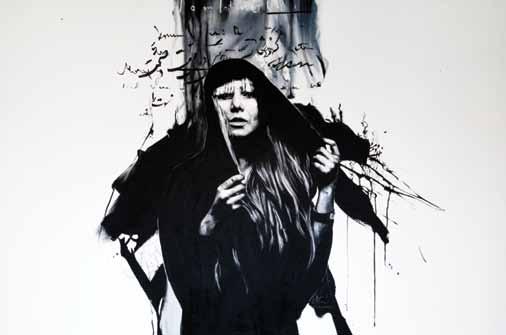




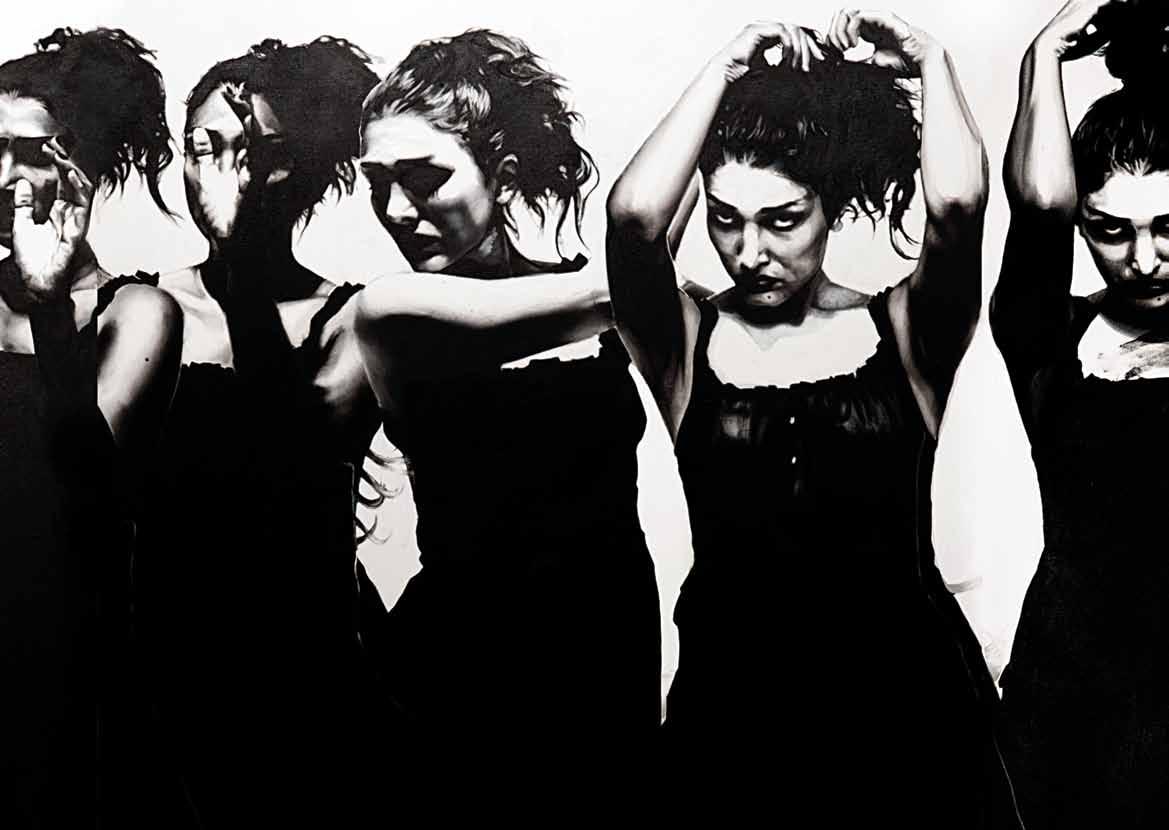
 Betrayal
2012
Oil on Canvas
100 x 150 cm
Betrayal
2012
Oil on Canvas
100 x 150 cm
